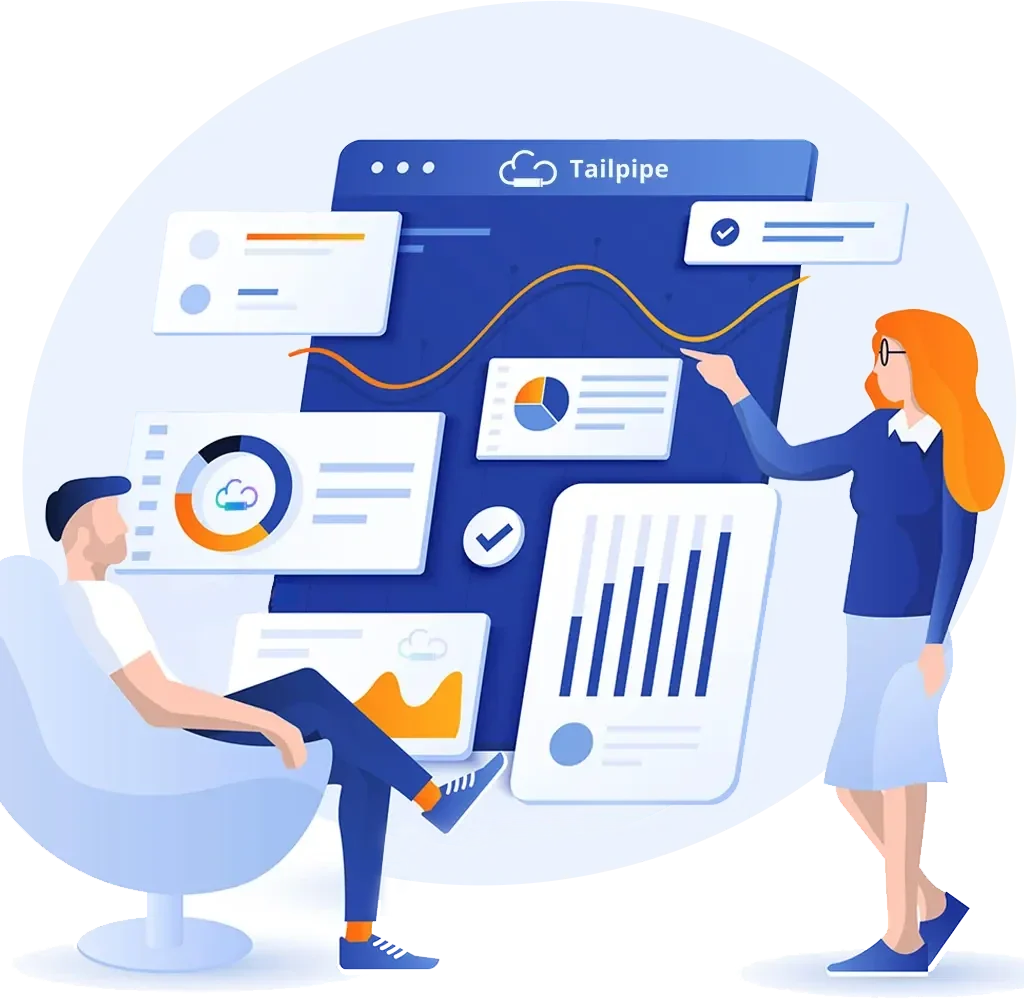Cloud Carbon Emissions: accurate measurement, effective reductions
Tailpipe accurately measures your organisation’s carbon emissions from cloud computing, suggesting cost-effective reduction methods without impacting performance. Accurate, granular, comprehensive, timely and transparent, Tailpipe helps save costs and decrease your carbon footprint.

Cloud Carbon Emissions: accurate measurement, effective reductions
Tailpipe accurately measures your organisation’s carbon emissions from cloud computing, suggesting cost-effective reduction methods without impacting performance. Accurate, granular, comprehensive, timely and transparent, Tailpipe helps save costs and decrease your carbon footprint.
How Tailpipe Works
In a world where operational efficiency and reducing carbon emissions converge, Tailpipe offers unparalleled transparency, accuracy and comprehensive emissions calculations for organisations navigating the complexities of cloud computing. Tailpipe has been created by Environmental and Computer Scientists with more than two decades’ experience in designing low carbon computing infrastructure and delivering advanced cloud computing systems. Tailpipe currently supports AWS; Azure and GCP are coming soon.
Tailpipe offers accurate and comprehensive carbon emission measurements, across cloud computing services, locations, projects, components and their lifecycle stages, alongside recommendations to reduce both costs and carbon emissions. The energy used by, and carbon emissions from, cloud computing in data centers is growing globally.
Worldwide, many organisations that have made commitments to achieve Net Zero within the next few years are heavy users of cloud computing. This means that it is essential to get accurate and comprehensive carbon emissions measurements from cloud computing usage.
Tailpipe, using a methodology aligned with the global standard for calculating Software Carbon Intensity, ISO21031:2024, provides easy-to-understand dashboards and easy-to-integrate APIs that deliver an organisation’s cloud computing carbon emissions by service, by location, by project, and by component and their lifecycle stage, including embodied emissions.
Tailpipe then provides recommendations to help you reduce carbon emissions and lower costs.


Recommendations
Only by understanding your carbon emissions from cloud computing can you reduce them without causing performance issues. Tailpipe provides a series of recommendations that can help reduce both cloud computing’s carbon emissions and cloud costs. You then decide whether to implement them.

Accuracy
Tailpipe obtains data from cloud providers, silicon vendors, and equipment manufacturers, enhances it with regional electricity carbon intensity data, and securely processes it using proprietary algorithms adhering to ISO 21031:2024 to generate accurate embodied and operational cloud emissions data.

Comprehensiveness
It’s important that all the carbon emissions from cloud computing are included in the data that Tailpipe provides. That’s why Tailpipe determines both the carbon emissions from the operational usage of cloud computing, and the embodied emissions from the equipment’s manufacture and disposal.

Transparency
Tailpipe offers a transparent methodology for calculating all cloud usage emissions, enabling customers to understand its full derivation and data sources. Emissions data is presented by cloud computing component for an accurate understanding of where emissions are being generated.
Frequently Asked Questions
If you have further queries, you can get in touch with us here
